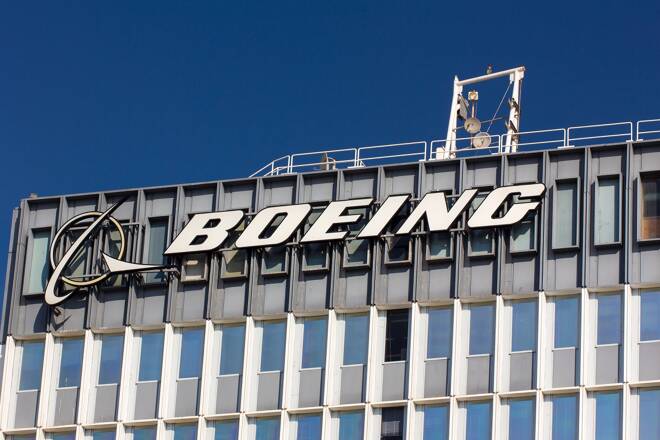Advertisement
Advertisement
Boeing Upgrades China’s Aircraft Demand; Forecasts Annual Passenger Traffic Growth of 5.5%
By:
Boeing, the world's largest aerospace company, upgraded their rolling 20-year forecast for China's aircraft demand and said the world’s second-biggest economy remains on track to become a leading global aviation market with eyes on 20-year demand for commercial airplanes and services worth $3.1 trillion.
Boeing, the world’s largest aerospace company, upgraded their rolling 20-year forecast for China’s aircraft demand and said the world’s second-biggest economy remains on track to become a leading global aviation market with eyes on 20-year demand for commercial airplanes and services worth $3.1 trillion.
The Boeing Market Outlook forecasts China’s airlines to acquire 8,600 new airplanes worth $1.4 trillion and commercial aviation services for $1.7 trillion over the next 20 years. That will help the aircraft producer to recover from the COVID-19 pandemic crisis.
The U.S. planemaker said the world’s second-largest economy has seen rapid growth in middle-class income, robust economic growth and fast-growing urbanization, indicating the country will lead passenger travel globally over the next few years. Boeing forecasts China’s annual passenger traffic growth to be 5.5% over the next 20 years.
Late last month, Boeing reported a loss for the fourth consecutive time in the third quarter as the slowdown in air travel demand due to the COVID-19 pandemic and grounding of 737 MAX hammered aircraft sales.
Boeing shares closed 3.46% lower at $182.15 on Wednesday; the stock is down about 45% so far this year.
Executive Comments
“While COVID-19 has severely impacted every passenger market worldwide, China’s fundamental growth drivers remain resilient and robust,” said Richard Wynne, managing director, China Marketing, Boeing Commercial Airplanes.
“Not only has China’s recovery from COVID-19 outpaced the rest of the world, but also continued government investments toward improving and expanding its transportation infrastructure, large regional traffic flows, and a flourishing domestic market mean this region of the world will thrive.”
Boeing Stock Price Forecast
Seventeen equity analysts forecast the average price in 12 months at $182.94 with a high forecast of $260.00 and a low forecast of $137.00. The average price target represents a 0.43% increase from the last price of $182.15. From those 17 analysts, eight rated “Buy”, eight rated “Hold” and one rated “Sell”, according to Tipranks.
Morgan Stanley gave the base target price of $165 with a high of $238 under a bull-case scenario and $68 under the worst-case scenario. The firm currently has an “Underweight” rating on the global aerospace company’s stock. UBS Group set a $150 target price on the Boeing. The firm currently has a neutral rating on the aircraft producer’s stock.
Several other analysts have also recently commented on the stock. JP Morgan raised their stock price forecast to $190 from $155. Alembic Global Advisors upgraded shares of the Boeing to an overweight rating from a neutral rating and raised their price target to $184 from $150. Credit Suisse Group dropped their price objective to $74 from $84 and set a neutral rating on the stock. Canaccord Genuity reaffirmed a hold rating and issued a $155.00 price objective on shares.
Analyst Comments
“We view Boeing as a relative Underweight as we see better opportunities in the aftermarket. We view Boeing’s order book to be more at risk post-COVID than consensus based on our analysis. The main reasons are: 1) A vaccine will not fix airline’s ability to take deliveries overnight; 2) the 737 MAX delay trigger cancellation rights; and 3) the potential for additional 737 MAX delays is still outstanding,” said Kristine Liwag, equity analyst at Morgan Stanley.
“Based on our bottom-up MS Aerospace Retirement Analysis, we estimate there is a $73 billion downside risk to Boeing’s revenue in 2020-2025. If air traffic does not quickly recover back to 2019 levels and airlines don’t regain pre-COVID-19 profitability, there are significant risks of cancellations.”
Upside and Downside Risks
Risks to Upside: 1) 737 MAX successful re-entry into service converts inventory into cash. 2) Acceleration of aircraft retirements boost new aircraft demand. 3) Profitable customer airlines order new aircraft – highlighted by Morgan Stanley.
Risks to Downside: 1) Potential additional 737 MAX delays create additional downside risk to the program. 2) Delayed aircraft retirements lower new aircraft demand. 3) Distressed customers’ financials trigger order cancellations.
Check out FX Empire’s earnings calendar
About the Author
Vivek Kumarauthor
Vivek completed his education from the University of Mumbai in Economics and possesses stronghold in writing on stocks, commodities, foreign exchange, and bonds.
Advertisement
